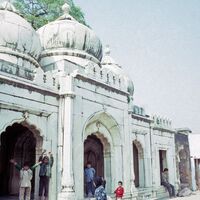 Moti Masjid, Zafar Mahal Complex
Moti Masjid, Zafar Mahal Complex 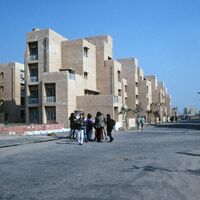 Government housing
Government housing 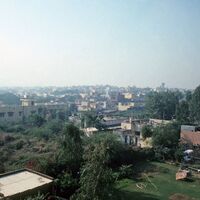 Mehrauli (neighborhood)
Mehrauli (neighborhood) from walls
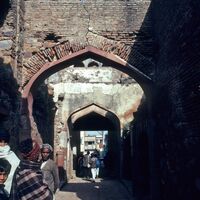 Zafar Mahal
Zafar Mahal 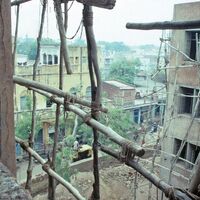 Mehrauli (neighborhood)
Mehrauli (neighborhood) arial view from school roof
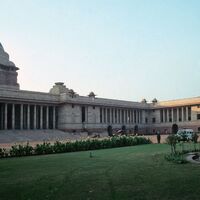 President's House
President's House 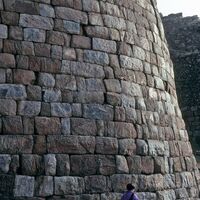 Tughlaqabad Fort
Tughlaqabad Fort 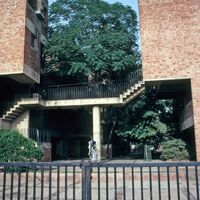 housing
housing 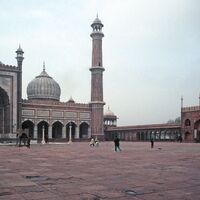 Jama Masjid
Jama Masjid view of courtyard
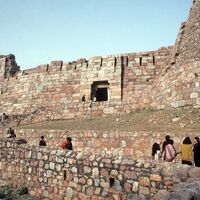 Tughlaqabad Fort
Tughlaqabad Fort road to the fort
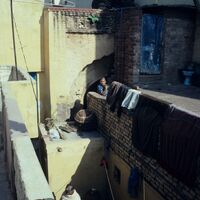 Mehrauli (neighborhood)
Mehrauli (neighborhood) courtyard houses
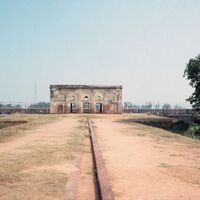 Humayun's Tomb
Humayun's Tomb east (rear) gate
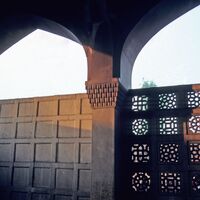 Delhi
Delhi 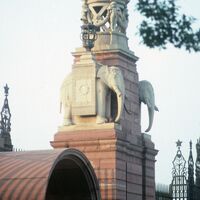 President's House
President's House 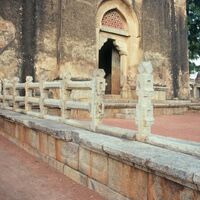 Hauz Khas Complex
Hauz Khas Complex railing detail
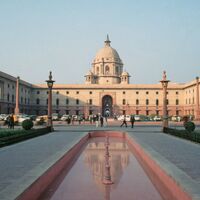 Secretariat Building
Secretariat Building The Secretariat Building was designed by the prominent British architect Herbert Baker in Indo-Saracenic Revival architecture. Both the identical building have four levels, each with about 1,000 rooms, in the inner courtyards to make space for future expansions. In continuation with the Viceroy's House, these buildings also used cream and red Dholpur sandstone from Rajasthan, with the red sandstone forming the base. Together the buildings were designed to form two squares. They have broad corridors between different wings and wide stairways to the four floors and each building is topped by a giant dome, while each wings end with colonnaded balcony. Much of the building is in classical architectural style, yet it incorporated from Mughal and Rajasthani architecture style and motifs in its architecture. These are visible in the use of Jali, perforated screens, to protect from scorching sun and monsoon rains of India. Another feature of the building is a dome-like structure known as the Chatri, a design unique to India, used in ancient times to give relief to travelers by providing shade from the hot Indian sun.
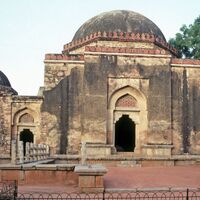 Hauz Khas Complex
Hauz Khas Complex The Hauz Khas Complex houses a water tank, an Islamic seminary, a mosque, a tomb and pavilions built around an urbanized village with medieval history traced to the 13th century of Delhi Sultanate reign. It was part of Siri, the second medieval city of India of the Delhi Sultanate of Allauddin Khilji Dynasty (1296–1316).
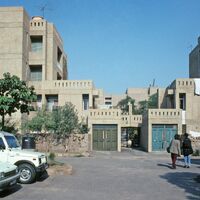 Asian Games Village
Asian Games Village 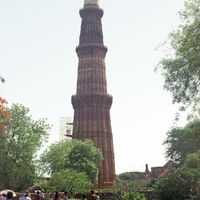 Qutb Complex
Qutb Complex Qutb minar
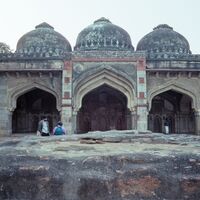 Lodi Gardens
Lodi Gardens three domed mosque
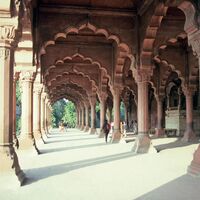 Red Fort, Diwan-i-Am
Red Fort, Diwan-i-Am The Red Fort was the residence of the Mughal emperor of India for nearly 200 years, until 1857. It is located in the centre of Delhi and houses a number of museums. In addition to accommodating the emperors and their households, it was the ceremonial and political centre of Mughal government and the setting for events critically impacting the region.
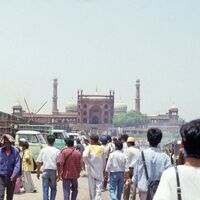 Jama Masjid
Jama Masjid main gate
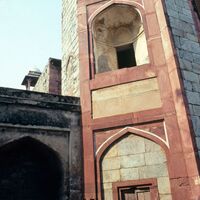 Humayun's Tomb
Humayun's Tomb gate
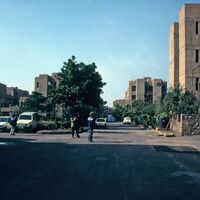 Asian Games Village
Asian Games Village 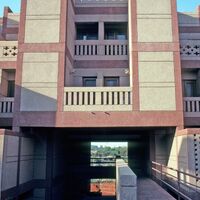 National Institute of Immunology
National Institute of Immunology